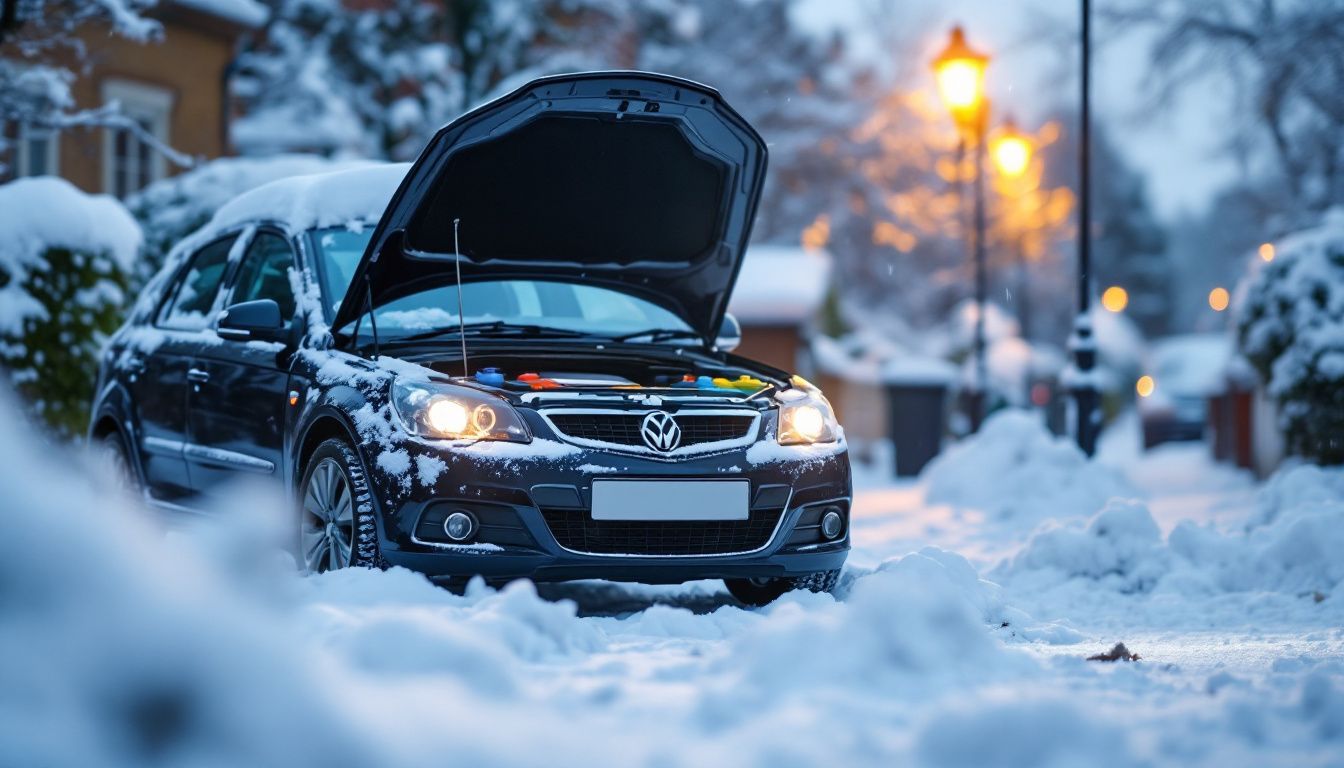Car Batteries | 6 MIN READ

MARK WATSON | CONTENT HEAD
17
Nov, 2024Winter can be tough on car batteries. Car battery replacement is advised every four years. Our blog offers tips to keep your battery in top shape during cold months. Read on for expert advice.
Key Takeaways
- Test your car battery before winter to ensure it can handle the cold. Many garages offer this service for free, and a healthy battery should be less than four years old.
- Park your vehicle in a garage or under direct sunlight during winter. This helps maintain the battery's warmth and reduces the strain on it from cold weather.
- To reduce battery load, turn off unneeded electrical features before starting the engine. Disconnect accessories that drain power if you don't drive often.
- Clean your battery terminals with a baking soda and water mixture to prevent corrosion. Keep an eye on electrolyte levels and top up with distilled water when necessary.
- Always have jump leads ready for emergencies and consider getting breakdown cover. For long periods of inactivity, use a trickle charger or battery conditioner to keep the battery in good condition.
1. Check Your Battery’s Health Before Winter
Before winter arrives, testing your car battery is crucial. Many garages provide free services for this. They check to make sure your battery can handle the cold months ahead. A healthy battery should not be older than four years, as it risks losing power when you need it most.
You must also monitor the acid level in your car's battery every six months. This prevents electrolyte stratification, ensuring the battery works efficiently. Monthly load tests are advisable, too, especially as temperatures drop.
This step helps detect potential issues early, saving you from unexpected problems on winter journeys. Don't forget about electric vehicles (EVs); their 12-volt batteries also require attention since they power important systems in the car.
2. Protect Your Car by Parking Wisely
After ensuring your battery is in good shape, consider parking your vehicle strategically to protect it during winter. This is one of the must-do’s as you prepare your car for winter. To choose a parking place wisely implies selecting areas that shelter your vehicle from severe cold.
With a garage at your disposal, it should be the prime location to keep your vehicle overnight. This act helps maintain the battery's warmth, hence lessening the taxing effect of cold weather on it.
When a garage isn't an available choice, consider deploying a car cover as a protective measure.
It can also be advantageous to identify a parking spot that gets direct sunlight throughout the day. The sun's warmth contributes to retaining a certain level of heat around your vehicle, thus diminishing the pressure on its battery.
On especially frigid days, you might want to use an engine or battery heater. Such devices are essential in maintaining your car's core component - its battery - in prime condition against freezing temperatures that demand more energy to start engines.
Consciousness of these uncomplicated yet effective parking methods promotes better performance from batteries with high Cold Cranking Amps (CCA) ratings, which is significant for winter toughness.

3. Reduce Battery Load
Once you've ensured your car has a secure parking spot, the subsequent focus is on lessening battery load. This involves limiting the usage of electric features until your engine operates efficiently.
Prior to starting the engine, decrease the electrical demand by turning off entertainment systems and superfluous lights. Make it a habit to switch off these systems each time you vacate your car to prevent replacement in the future.
If your driving frequency is low, detach accessories like dash cams to prevent unneeded battery drain. Use your vehicle every three days to prevent your battery from reaching a flat state.
Against common thinking, simply letting the engine run for a few minutes daily can cause quicker battery wear rather than benefiting it. By embracing these habits, you'll prolong your battery's life-span and guarantee its efficiency throughout winter.
4. Maintain Clean Battery Terminals
Clean battery terminals can stop corrosion, which harms your car's battery. Mix baking soda and water to clean these parts well. This simple solution removes dirt and prevents damage that might stop your car from starting.
Make sure you also check the electrolyte levels in the battery. If they're low, carefully add distilled water with a funnel or sports bottle until they reach the correct level.
After topping up, always recharge the battery to keep it in good shape. Use a manual charger for this task, but avoid leaving it on for too long, as overcharging can harm the battery.
Check every half hour to see how it's doing. Secure the battery cables properly as well; loose connections can cause issues with power delivery and start-up problems in your vehicle.

5. Prepare for Emergencies
After ensuring your battery terminals are clean, next focus on emergency preparations. Always have jump leads in your car. They can save you in a pinch if your battery dies. It's wise to get breakdown cover, too.
Start Rescue offers services that come in handy if you face battery failure. Since this issue is a common cause for calls to breakdown services, having that security feels reassuring.
For cars left unused for long periods, consider using a trickle charger or battery conditioner. These devices keep the battery in good shape, reducing the chance of unexpected failures.
Knowing MOT test costs also helps plan for emergencies. Prices vary among providers like Start Rescue charging £39.76 and The AA up to £186.12. Being prepared means thinking about worst-case scenarios and keeping tools like a battery booster ready for use.
Conclusion
Keeping your car battery in top shape during winter demands attention and care. These five tips ensure that UK drivers can face cold weather without worry. Checking the battery's health, parking smartly, reducing load on the battery, keeping terminals clean, and preparing for emergencies are key.
With these steps, you can help your car perform well through the coldest months. Stay ahead of winter challenges by maintaining your car battery with these practical guidelines.



















































































-2000x804.jpg)


No comments